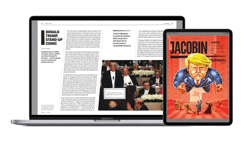At a publishing roundtable, if you ask publishers about using social media to drive single-copy sales, you'll find the consensus is "no, you cannot use social media to make money" and even more common, "yes, you can spend too much time in social media". I find that the majority of these responses come from publishers who simply dived in without ever mapping a plan of action and tend to over-use Hootsuite's auto-schedule function.
Of course, if you speak to Dell or any of the other many non-publishers that have seen the opposite results, you'll be inspired to know that social media users do in fact spend money.
The difference between Dell and magazine publishers is only that they have an enormous catalog of products. They can't bore fans and followers with the same marketing message, because their inventory is so large. Multi-platform publishers - those that sell books, events and digital goods - have been more successful with social media because the message isn't always "subscribe, subscribe, subscribe," it's "attend, buy, download … subscribe."
The key to using social media for selling more magazines is simply to diversify your marketing messages. Don't become the young grasshopper of every major publisher with millions of followers, take note of the ones who end up in the headlines for increasing sales with social media. Because, trust me, they are rarely the same publishers.
So when we decide whether or not social media can deliver a return on your investment, the real question is: what's your technique? Are you entertaining fans and followers with your promotions, or are you simply telling them to "click here" and "subscribe now?" Gather inspiration from the tips and publishing case studies below.
1. Create Dozens of 140-Character Promotions for a Single Issue
The beauty of Twitter is that there are 24 hours in a day, and unlike Facebook, it's unlikely that any one follower will see every Tweet you send.
With that in mind, how many different ways do you Tweet about a single issue? Dissect each issue into at least 30 favourite parts that can be used as promotion. Next, copywrite thirty different types of Tweets that aim to sell a single issue using those bits and pieces. They might be quotes from articles, or photos from behind the scenes, or the cover itself.
2. Post Behind-the-Scenes Teasers
Elle UK has been a pioneer in using Twitter to drive newsstand sales. One of their first promotions, two years ago, was a Twitter-exclusive live video stream behind the scenes of a shoot with Kristen Stewart. They claim the promotion doubled magazine subscriptions, increased web traffic by 231% and traffic from social media by 218%.
When David Beckham donned the cover as their first solo male cover star, they Tweeted photos from behind the set while he was shooting - another successful campaign that boosted sales of the cover. Other magazines, like Dance, have created boards on Pinterest featuring outtakes, although there seems to be much dropoff in interest from publishers using Pinterest, which is likely the result of picking their battles.
3. Involve Featured Celebrities and Experts in Promotion
Who has more social media fans and followers than you? More than likely, the celebrities and experts featured in your magazine.
Empire magazine, which covers movies and entertainment, ran an issue with 25 different front covers, each one featuring a different star from the X-Men film, in costume. They developed a landing page for the series, allowing people to pre-order the issues with the character they desired. Each cover also got its own issue order flow, so Empire simply needed to release each cover one by one on Twitter with a link to order. In addition, they got each of the 25 stars to Tweet their respective cover - resulting in their most-popular issue of the year.
Women's Health, which was one of only four American magazines to see an increase in newsstand sales in the first half of 2014, saw a huge boost after television star Kaley Cuoco shared her cover photo with more than 800,000 Instagram followers.
4. Pick One Platform Per Exclusive Content Promotion
When you do a promotion, for example, a cover release, choose one platform. This will allow you to focus your attention and orchestrate publicity in exactly the way you want. It will also encourage users to follow you on that platform. Seventeen and InStyle, both with primarily female audiences, have chosen SnapChat as their newest social test platform. Seventeen sends random snaps of celebrities when they're in-house, whereas InStyle decided to use it as a venue where they'll debut new covers. Executive Editor of Digital Angela Matusik claims the platform “allows us to reach people who might not necessarily be core readers of InStyle, who might not even be magazine readers."
5. Involve Your Subscribers in Your Process
If your readership is primarily millennials, you may already know their desire to customise and contribute. If a millennial isn't involved in some way with a brand, they haven't yet been converted to a loyal user.
Creative Nonfiction, a niche magazine for writers, asks their readers "Can you tell a true story in 130 characters (or fewer)?" They challenge readers to Tweet their "tiny truths" using the hashtag #cnftweet. Their booty is a re-tweet and a chance for their story to be published in the magazine.
A few years ago, New Scientist was the first magazine to test a neuromarketing technology, tech that allows you to come up with many different covers and be told which one will perform best. The winning cover drove newsstand sales up by 12%. Save a few bucks and perform your own test through social media, simply asking fans and followers which cover they like best. Sure, it's not scientific, but it's free!
6. Save Exclusive Content for Your Buyers
One tactic of many successful publishers is that they use social media to tease content, but don't release any of the content on their website for weeks or months after the issue hits the newsstands. This hard-to-get dance allows magazine publishers to keep their websites filled with content that attracts search visitors and social media users, but doesn't hinder newsstand sales.
7. Test Freemium Offers
Social media users expect free content. They believe they can find anything they want to read about on the web. That is, anything except exclusive content from your magazine, which holds tremendous value and is not free. Knowing that social media users like the word "free," this is a platform to promote free trials and free samples issues.
8. Work Backwards and Cross-Promote
When a reader buys a single issue of their magazine, they're more likely to buy another, so have no shame is promoting your social media channels in the footer of each page. Your goal is to inspire single-issue buyers to become recurring buyers, who become subscribers. To do this, you'll need to stay in front of them, and the best way to do that is to get them on your email list or to be followed by them in social media where they can benefit from all of the promotions above.
How Social Media Users are Different
The publishing industry is seeing a trend toward more social media, rather than less, which shows that publishers are either having success or hoping to emulate those who have seen success.
To turn social media into a revenue stream, you must first understand how very different they are. Social media users are an entirely different breed of buyers, which means they require a different approach to promotional communication.
1. Social media users are vocal. They love to rant, but they also love to praise. If you give them something to share, they are happy to share it. If you want them to participate in something, like Creative Nonfiction's Tweet contest, they want to join in. Consider using your loyal social media users to create viral campaigns around each new issue.
2. Social media users want you to know what they think. When a user @'s you on Twitter while talking about your product, they're not just speaking the native language, they're also calling you out. If they have an issue, they expect a response, and if they're praising you, they expect a thank-you. At the very least, they hope you'll respond. Start using the positive 140-character testimonials in your promotional efforts to increase more positive Tweets and posts about your brand.
3. Social media users are used to calls-to-action, and they won't hold it against you - in fact, they expect it. If you get questions and comments about upcoming issues, snag up interested parties with live links to turn those followers into buyers and subscribers.
4. Social media users want to tag you. If you're not currently on Facebook and Twitter, that means that your most loyal readers are talking about you in social media, and they can't share you with their friends. Sure, they can post a link to your website, but their instinct is to tag your page in their Facebook post, or @ you on Twitter. Many missed word-of-mouth promotions have been omitted simply because the brand doesn't exist in social media.
5. Social media users are everywhere, but you don't need to be. There's no such thing as a magazine that's successful on every social network. B2B magazines can do well on Facebook, but typically have a harder time than B2C. Food magazines get all the re-pins on Pinterest, but less visually oriented consumer magazines do not. Twitter is unique for every publisher. I suggest creating a 3-6 month marketing plan for any new social media network you plan to tackle. Every month, re-assess what's working and what's not. If by the end of six months, the platform has not worked for you, and you've truly tried every tactic on this list, plus ones you've invented with your team, then focus your attention on the social platforms that are working best.
Social media consumers pine for a relationship with the brands and publishers with whom they spend money. If you're able to create that connection, you can make them feel like VIPs, which creates the loyalty that drives newsstand and subscription sales.












